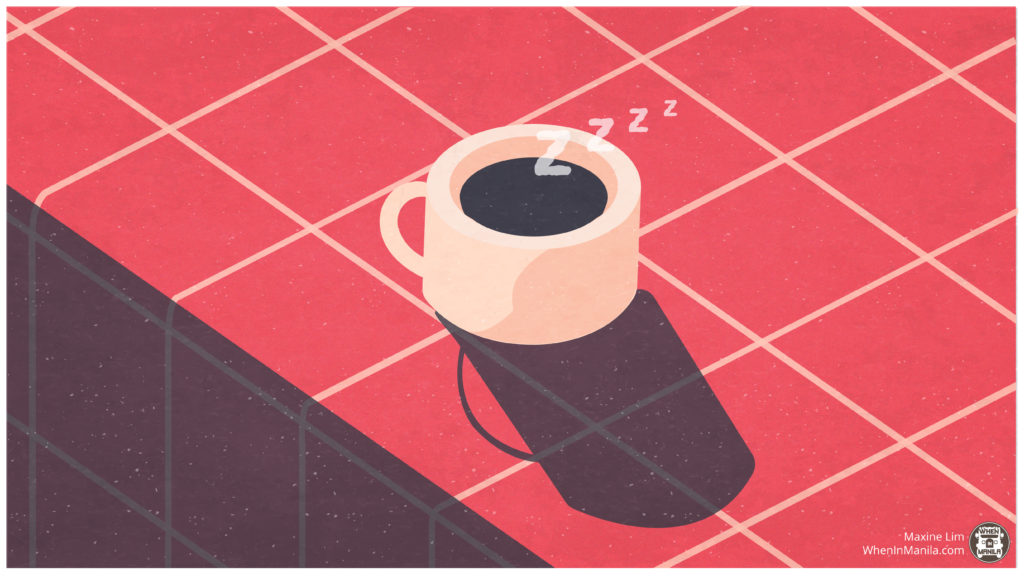Words by Micah Avry Guiao
To have coffee and naps appear in the same sentence might sound counterintuitive, even oxymoronic, but scientists would like us to consider otherwise.
As students (or professionals), we are constantly bombarded with a heavy workload. All-nighters are especially common in today’s university culture, as well as downing several cups of coffee a day just to keep yourself going over that one boring lecture.
The science behind it is fairly simple. Basically, you have a brain-induced chemical called adenosine, which is responsible for feelings of exhaustion and sleepiness that is meant to ensure good oxygenation during sleep. The more hours you’re awake, the more adenosine is produced that then fits into receptors in the brain.
What napping does (and caffeine cannot do) is clear these levels of adenosine in the receptors. While napping comes with positive results such as better cognitive abilities and learning capacity as compared to coffee, let’s face it: no one has time to spare for a nap. Even if you do, you are at a danger of sleep inertia (feeling drowsy and disoriented upon waking up). The reason behind this is that When a nap goes beyond 30 minutes but doesn’t reach the full sleep cycle of 60-90 minutes, grogginess is enhanced–you feel even more tired after than before the nap took place.
How about coffee then? Drinking coffee makes caffeine compete with adenosine for the spots in the receptors. The reason why coffee is often more effective than naps is because it blocks adenosine from the receptors, which leaves you more alert and less drowsy. With caffeine in place, adenosine will still be present, but it is unable to be received by the receptors.
See where this is going?
To put it succinctly, scientists propose that coffee naps might be the way to go. The consumption of coffee will not immediately render its desired result the moment you drink it. Rather, it takes about 20 minutes for the caffeine to fully kick in your system.
To fully maximize the effects of coffee, first getting rid of the adenosine from your receptors through sleeping will definitely help. Afterward, napping should more or less be timed at 20 minutes–the same time it takes for caffeine to reach your receptors. This allows you to acquire the benefits of napping without taking that risk of going through sleep inertia.
Have you tried taking coffee naps? How did it go? Let us know in the comments!





